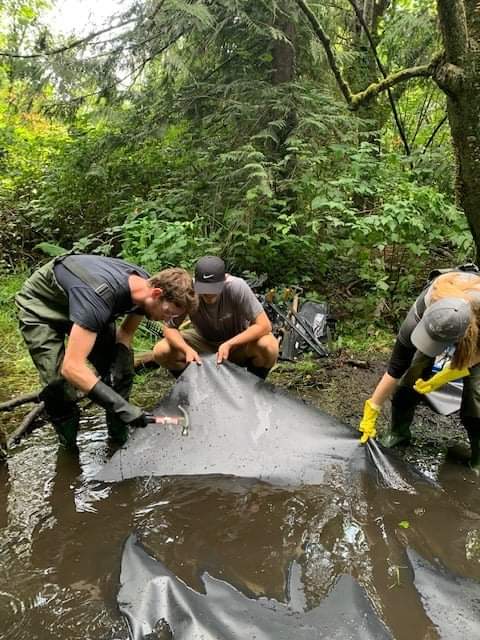
This past August, the Lower Mainland Conservation Field Crew broke ground (or perhaps more fittingly, broke water) on a new restoration project at The Nature Trust’s Wells Sanctuary property. Wells Sanctuary conserves a portion of Luck-A-Kuck Creek, a salmon-bearing creek that runs through the city of Chilliwack.
The Crew’s goal was to remove invasive plants that were so overgrown within and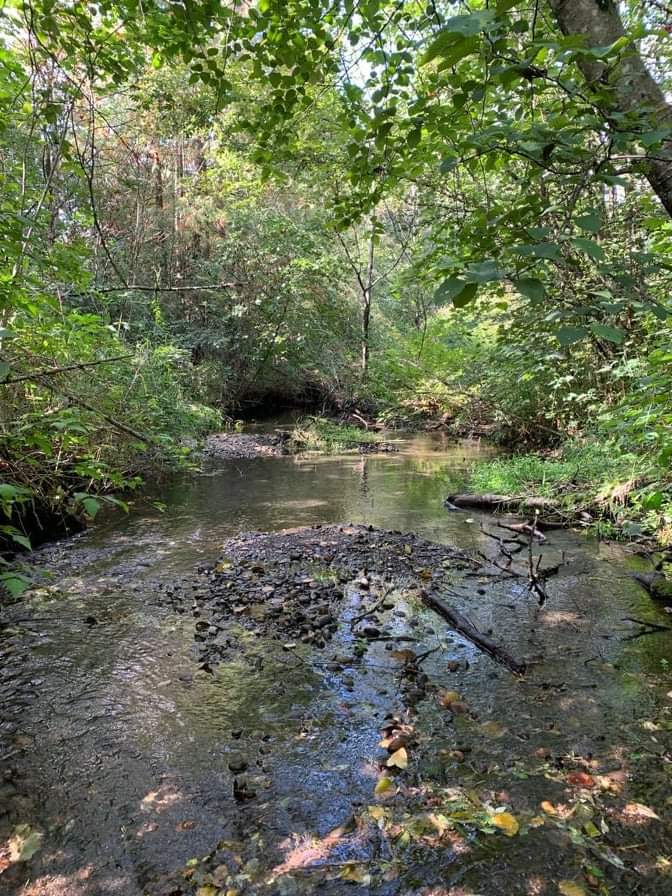 beside the creek that they slowed the flow of water and created a build-up of fine sediment on the normally gravel bottom. Since Salmon prefer gravel substrate for spawning, restoring the conditions in the creek that naturally retain and sort gravel will improve reproductive success for these species. Coho and Chum Salmon fry have been observed at this site by locals and the crew since 2015. But Salmon stock has been declining over time, and restoring their gravel habitat for spawning could be a crucial component in stabilizing their populations.
beside the creek that they slowed the flow of water and created a build-up of fine sediment on the normally gravel bottom. Since Salmon prefer gravel substrate for spawning, restoring the conditions in the creek that naturally retain and sort gravel will improve reproductive success for these species. Coho and Chum Salmon fry have been observed at this site by locals and the crew since 2015. But Salmon stock has been declining over time, and restoring their gravel habitat for spawning could be a crucial component in stabilizing their populations.
Entering an ecosystem to perform restoration can have unintended consequences, so work must be done beforehand to determine the viability of the project and mitigate any potential risks. This included careful planning, applying for permits and assessing the ecosystem. Although this preliminary work can seem taxing, the reward is long lasting as well as fulfilling!
Once the permit and assessments were completed for Luck-A-Kuck Creek, the Lower Mainland Crew was free to launch into the more hands-on part of the project. Clad in waders and brightly coloured rubber gloves, the Crew stepped into the creek to begin the long process of hand pulling the thick mats of invasive species that had been choking the stream for years. The invasive plants were the usual suspects: Water Mint, Reed Canary Grass, Purple Loosestrife, Himalayan Blackberry and Yellow Flag Iris.
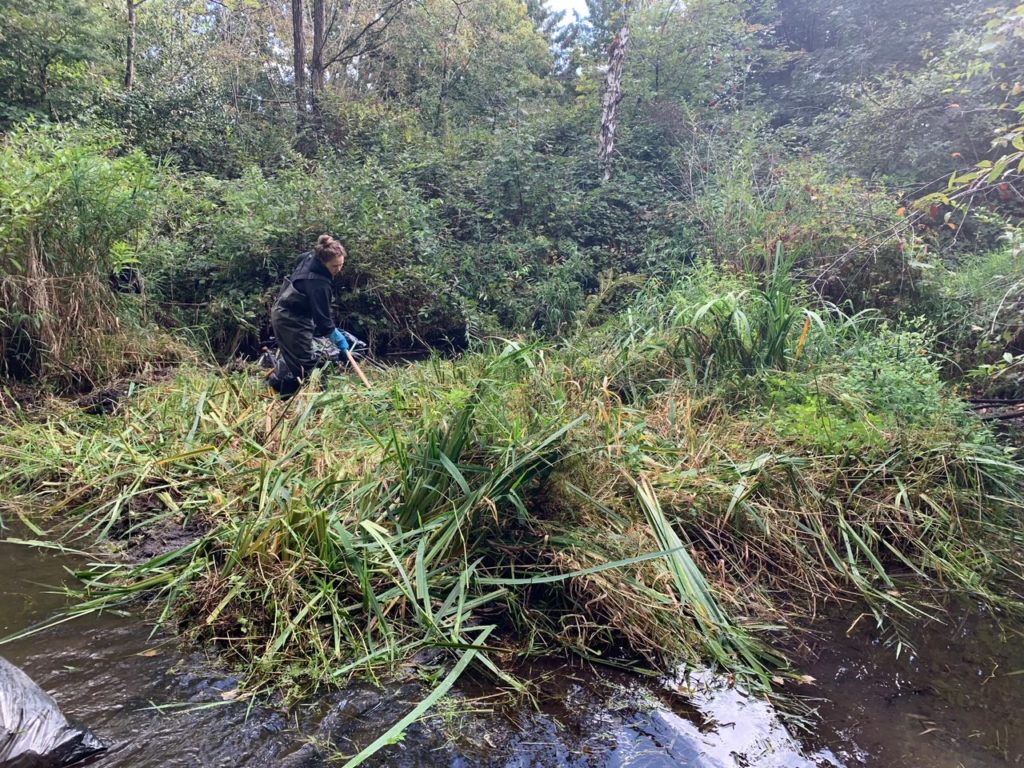
Over the course of three weeks, more than 15 trips to the local green waste dump, and with the help and guidance from the South Coast Conservation Land Management Program (SCCLMP) Crew, the team worked hard to create a two-meter-wide, continuously flowing channel through The Nature Trust’s protected section of Luck-A-Kuck Creek. Their methods involved hand pulling and sawing away at the tick mats of invasive species. They even took a canoe ride to reach the deeper waters!
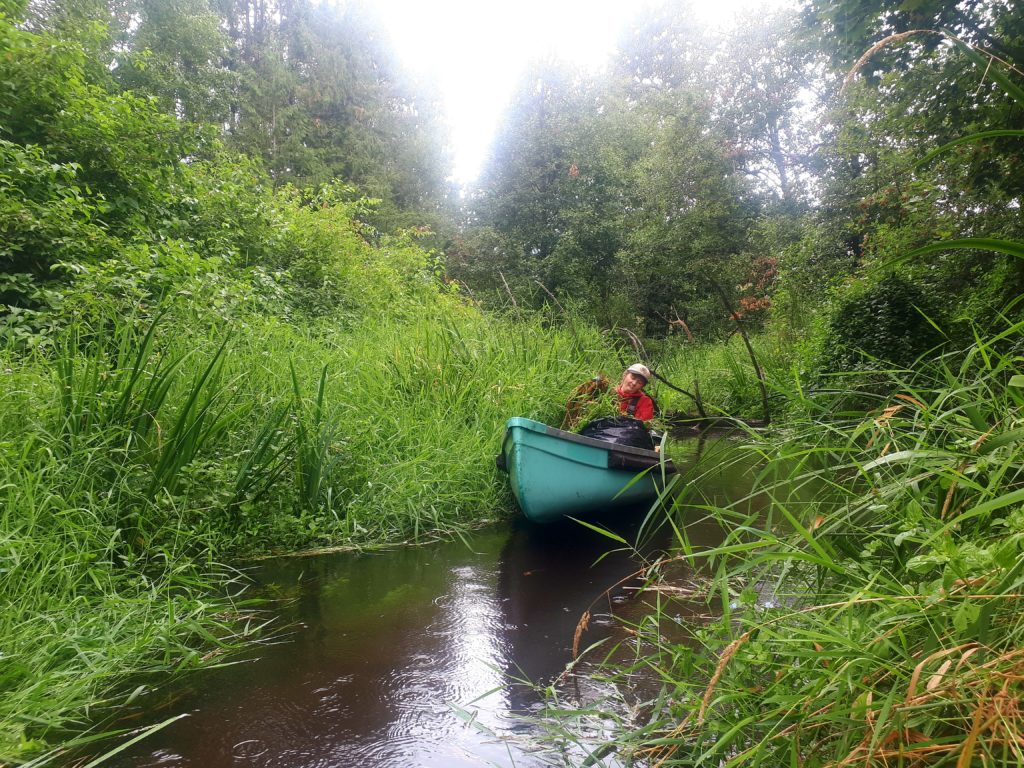
The Crew also installed benthic mats which specifically target Yellow Flag Iris, an invasive plant that can be especially detrimental since it forms dense thickets that outcompete native species and displace wildlife. In Luck-A-Kuck Creek, these compact Iris systems have been reducing the water flow and contributing to the build-up of silt on the stream’s gravel bottom. The Crew is hopeful that this method of management will keep Yellow Flag Iris from returning in the future, and are looking forward to checking the progress next Spring.
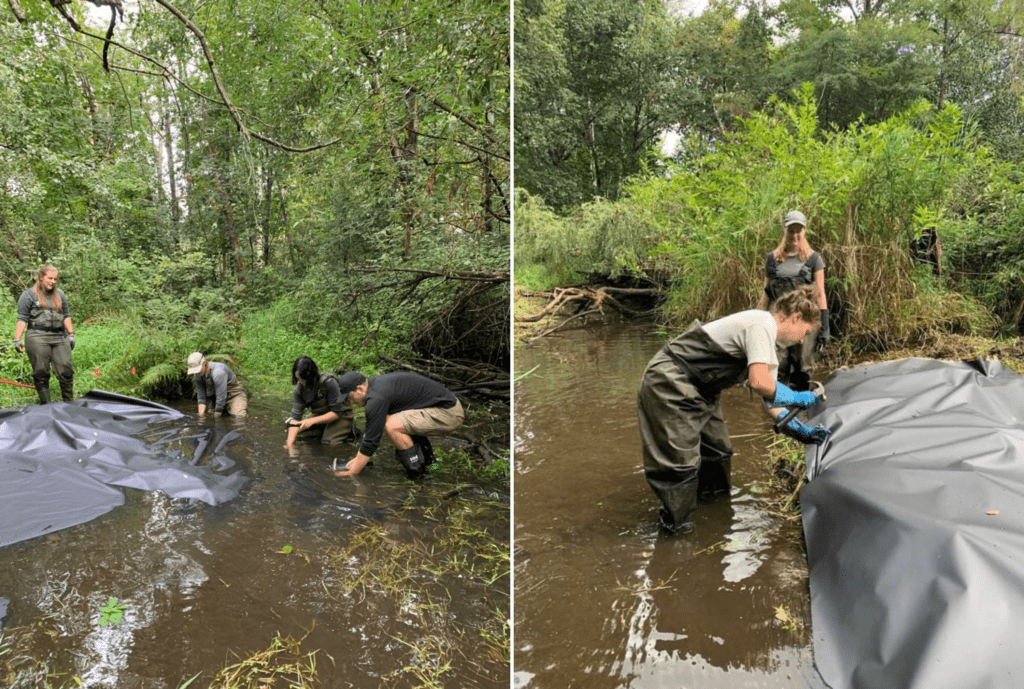
Through the long and arduous work, the Crew noticed it wasn’t all rebellious invaders inhabiting Luck-A-Kuc Creek. While ankle to chest deep in the stream, they observed native species such as Signal Crayfish, Freshwater Lamprey, Northwestern Salamander, and Pacific and Sitka Willow. These sightings motivated the Crew, showing all the species that could benefit from the restoration of the Luck-A-Kuck Creek ecosystem. It was especially rewarding when the Crew realized that their progress was being observed by two Barred Owls hunting for Crayfish by the stream!

The Luck-A-Kuck Creek restoration project was unquestionably a highlight for the Lower Mainland’s summer Crew. With their hard work, gravel beds were uncovered and a continuous, flowing channel was restored, ultimately improving the stream’s habitat for future spawning Salmon.

Before and After restoring Luck-A-Kuck Creek
A big thank you for all the support from the SCCLMP team at Ducks Unlimited, Steve Clegg with The City of Chilliwack, Parr Road Green Depot and the Wells Sanctuary Society.
